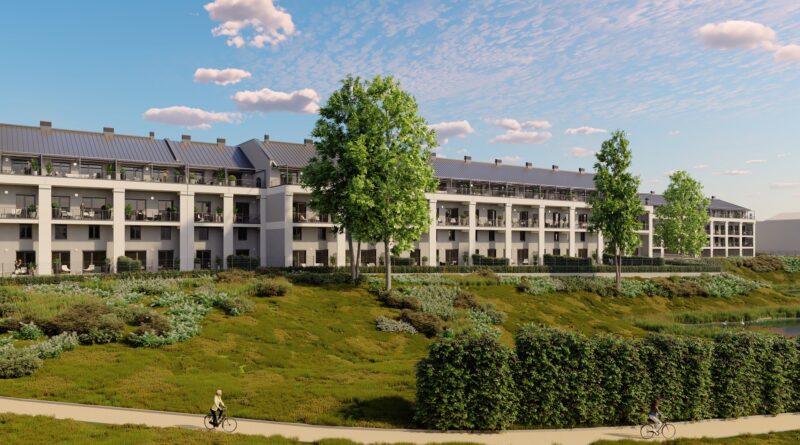European logistics markets at a new record in 2011 despite rising economic uncertainty
Overall take-up amounted to 16.3 million sq m, 59% ahead of the 10-year annual average according to Jones Lang LaSalle research
European logistics take-up for assets of over 5,000 sq m in size (10,000 sq m in the UK) peaked at 16.3 million sq m in 2011, 12% ahead of 2010 and 59% higher than the 10-year annual average. Stronger activity year-on-year was seen in most markets, including those countries where economic growth remained squeezed or even contracted in the latter part of the year. The healthiest increase in take-up year-on-year was seen in Belgium ( 121%, although growth came from subdued levels), France ( 52%) and Hungary ( 52%). Substantial growth was also evident in the Netherlands ( 20%), Poland ( 28%) and, slightly surprisingly, Italy ( 26%). In contrast, take-up declined in the Czech Republic (-47%), Russia (-14%), Spain (-5%) and the UK (-47%) – in part driven by limited available modern supply in the most sought-after locations, underplaying existing occupier requirements. “Continued strong occupier demand was driven by network optimisation and outsourcing, as well as robust demand originating from e-commerce and considerable domestic demand in emerging markets both in Central and Eastern Europe and Asia” comments Alexandra Tornow, Jones Lang LaSalle EMEA Industrial and Logistics Research.
Germanysaw the strongest activity (31% of the European total) and for the first time exceeded the five million sq m mark in 2011. Accelerating activity in France over H2 2011 meant that almost 1.9 million sq m were taken in the full-year, the second highest volume across Europe. In contrast, with 1.2 million sq m, the UK dropped out of the “top 3” last year. Activity was held back by bleak economic growth prospects and a significant reduction in supply of available modern distribution buildings. This, in combination with the need for long lease commitments to justify new build-to-suit development meant that demand could not always be satisfied.
Buoyant occupier activity helped Poland and Russia climb the ranking of square metres taken in 2011, respectively recording 1.7 million and 1.6 million sq m. Take-up levels increased due to the regions’ maturing distribution market with ongoing network optimisation and outsourcing, and strong domestic demand driven by robust economic growth across the CEE and Russia and this trend is expected to keep activity on healthy levels over the medium-term.
Fuelled by the strong occupier activity, development continued to increase throughout the year with limited available modern supply leading to strong build-to-suit volumes. Full year 2011 completion volumes exceeded 5.8 million sq m, 18% ahead of 2010, although this was only half of the volume seen in the peak year of 2008. Despite increasing development, only three countries saw full year 2011 volumes exceed their respective 10-year annual average: Germany ( 58%), Belgium ( 28%) and France ( 30%). New completions were still significantly below their respective 10-year annual average elsewhere in Europe with the exception of Italy, where volumes fell in line with the average. A majority of markets still recorded higher development pipelines year-on-year in January 2012, however, only France, Italy and Poland saw ongoing expansion in pipeline volumes in H2 2011, while floor space under construction fell behind the 10-quarter high recorded in Q2 in all other markets. “Development activity is expected to slow further, at least in the first half of 2012, due to a combination of tighter occupier markets and bank lending restrictions. As such, the supply gap for modern assets is likely to deepen in many markets, prompting further rental growth in a limited number of selected markets in 2012 although overall we expect rental levels to stabilise” comments Alexandra Tornow.
In 2011, the Jones Lang LaSalle weighted prime distribution rent index grow 1.3% year-on-year, although rental growth on a quarterly basis started to slow in the second half of the year. Rental growth was led by CEE and Russia, with the sub-index for the region recording an annual uplift of 9.2%. In contrast, the Western European sub-index continued to contract, down by 0.3% in 2011 year-on-year.
Rita Tuza, Head of Research, Jones Lang LaSalle Hungaryadded: “In 2011 gross take up amounted to nearly 330,000 m2 in the Budapest industrial market, which indicated a growth of more than 50%. Out of this volume renewals represented 46%, therefore net take up totalled only 152,500 m2. Good news, that even this level showed an increase year on year. Similarly to other European markets speculative developments were held back in Hungary as well, however we can’t speak about the shortage of supply, as the vacancy rate was still very high, 21%, in Q4 2011. Given this a potential rental growth is not expected in 2012.”
































